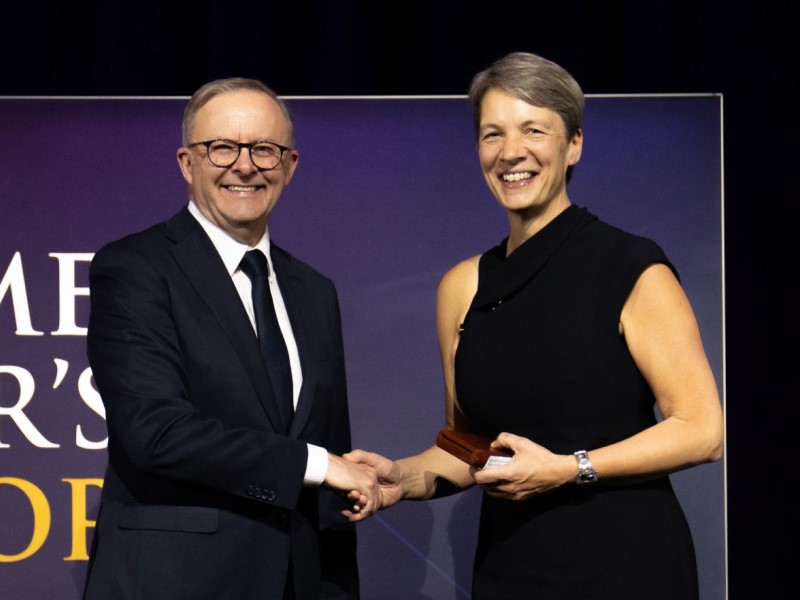Time is running out to nominate the work of Australia’s top innovators, scientists and educators for the Prime Minister’s Prizes for Science, which closes in less than a month.
Five science and innovation awards and two science teaching awards offering a prize pool of $750,000 are up for grabs, with the Prime Minister’s Prize for Science and the Prize for Innovation both valued at $250,000. Nominations for all seven awards close on February 8.
The Prime Minister’s Prize for Science is awarded for a “significant advancement of knowledge through science”, whereas the Prime Minister’s Prize for Innovation is awarded for innovative research translation into a commercially viable product.
Silicon Quantum Computing chief executive Professor Michelle Simmons took out last year’s science prize for her work in creating the field of atomic electronics. The innovation prize went to Infensa Bioscience co-founder and chief scientific officer Glenn King for his work on finding useful applications for the venom of the Australian funnel web spider.
Other previous winners of the prize for science include Edward Holmes, Ian Frazer, and Frank Fenner, while previous innovation winners include Dr Simon Poole, Andrew Bartos, Dr Glenn Baxter and Dr Steven Frisken.

The three other science and innovation awards, offering $50,000 in prize money, are awarded to the physical scientist of the year, life scientist of the year, and new innovators.
Two science teaching prizes — the Prime Minister’s Prize for Excellence in Science Teaching in Primary Schools and Prime Minister’s Prize for Excellence in Science Teaching in Secondary Schools — also worth $50,000 are similarly open for nominations.
The winners, either an individual or a team of up to four, are determined by an independent committee led by Australia’s chief scientist Dr Cathy Foley. Nominations must be for Australian citizens or permanent residents and can’t be self-nominated.
The top innovation prize was introduced by former Prime Minister Malcolm Turnbull to the awards in 2015, the same year the National Innovation and Science Agenda was announced, with the ‘new innovators’ arriving on the scene the following year.
In 2022, the winner of the Prime Minister’s Prize for Innovation was so hard to determine that it was awarded to the founders of molecular diagnostics solutions firm Speedx, as well as the team that developed and commercialised mineral sample analysis technology PhotonAssay.
Dr Foley told InnovationAus.com last year that a large part of what makes a scientist deserving of the Prime Minister’s Prizes for Science is a dual capability to produce “high quality research at the cutting edge” and engage with a broader science community.
“The best scientists actually recognise that they’ve got to do their work, but they’ve also got to engage in making the system work, whether it’s editing journals, being a peer reviewer, mentoring, supervising students, organising conferences,” Dr Foley said.
“I’d like to say we all have great ideas on our own, but… it’s by talking with others that you really… put things together and coalesce ideas. That’s what I’ve seen every time if you go back looking at the history of all the people who’ve won.”
When nominations for the 2024 prizes opened last November, Industry and Science minister Ed Husic described the awards as “Australia’s biggest annual opportunity to recognise and celebrate the important work of our scientists, innovators and STEM teachers”.
“I always look forward to the opportunity to showcase Australia’s world-class science and research sector and I strongly encourage people to put their nominations forward for the 2024 prizes,” he said.
Do you know more? Contact James Riley via Email.

